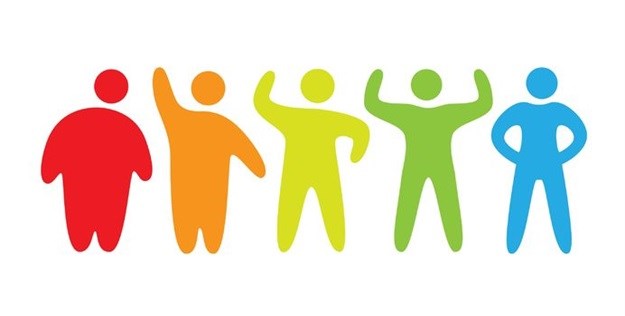The Biokinetics Association of South Africa (BASA) has called for the definition and management of 'obesity' to be revisited as World Anti-Obesity Day is marked on 26 November and South Africa has just commemorated National Obesity Week from 15-19 October.
BASA President, Dr Gerda Joubert, says the current reliance on Body Mass Index (BMI) as the main and predominantly used measure to determine overweight and obesity is too narrow to determine accurately whether an individual is at risk of developing obesity-related health complications. These include conditions such as high blood pressure, coronary heart disease, insulin resistance, type 2 diabetes, stroke, gall bladder diseases and several types of cancers, depression and lower back pain.
BMI is calculated by dividing the individual's weight in kilograms by the square of his/her height. Many BMI calculators are available online and do the complicated calculation for you. A result of over 25 is considered "overweight"; and over 30 is classified as 'obese'. However, Dr Joubert believes that this definition is too broad and fails to take account of other important factors.
"What many people may not know is that it is quite possible for two individuals of exactly the same height and weight - and thus having the same BMI - to be at totally different levels of risk for developing obesity-related health conditions.
"Missing factors in the 'obese' equation are the person's body fat percentage and waist circumference and that needs to be measured by a trained medical professional, such as a biokineticist."
One's body fat percentage is determined by measuring what percentage of your body is made up of fat. Everything else is usually referred to as 'lean tissue'.
Biokineticist promotes health
The primary function of a biokineticist (who is registered with the Health Professions Council of South Africa (HPCSA) as an allied medical professional alongside physiotherapists, occupational therapists, psychologists and dietitians) is health promotion and the improvement of physical functioning and health care through scientifically based physical activity or exercise programme prescription.
"Biokineticists are trained to conduct anthropometric measurements, systematic measurements of the size, shape and composition of the human body, including total body fat percentage.
"Once you know what your body fat percentage is, a biokineticist will prescribe an exercise or movement programme that is designed to reduce your body fat percentage, while taking account of your state of health."
However, dealing with overweight and obesity effectively requires a multidisciplinary approach. The exercise programme prescribed by the biokineticist has to be combined with an appropriate individualised eating programme, which should be formulated by a registered dietitian.
Dr Joubert also advises anyone wanting to reduce their body fat percentage to be checked by a GP, physician or health nurse for any obesity-related risk factors such as high cholesterol, blood pressure and blood glucose.
Should any of those risk factors are found to be present, they will be taken into account by the biokineticist and dietitian when formulating appropriate exercise and eating programmes.
"There are no quick-fix solutions to beating obesity and obtaining the right body fat percentage. However, adopting scientifically based programmes will enable you to achieve your goal safely and in a way that is more likely to have the best long-term results," Dr Joubert concludes.
BMI vs body fat measurement
This case study reveals why BMI alone is not accurate.
Two women are both 1.62m tall. Both weigh 63.5kg. Both have an ideal BMI of 24. That should be the end of the story - but it is not.
The first woman does not exercise and eats a lot of junk food. She keeps her weight down by controlling her junk food portion sizes. A body fat test reveals that she has 19 kg of fat and 44.5 kg of lean mass. That gives her a body fat percentage of 30 - just shy of the 'obese' range.
The other woman does weight training workouts and cardio exercise three times a week. She eats a healthy diet. Her body fat test reveals she has 12.7 kg of fat and 50.8 kg of lean mass, giving her a body fat percentage of 20 - hovering between the coveted 'athlete' and 'fit' range.
With these results, it is not surprising that the women's body shapes are very different - as is their risk of developing obesity-related disorders.
| Body fat percentage index | | Category | Men | Women |
| Essential Fat | 2 - 4% | 10 - 12% |
| Athlete | 6 - 13% | 14 - 20% |
| Fit | 14 - 17% | 21 - 24% |
| Acceptable | 18 - 24% | 25 - 31% |
| Obese | = 25% | = 32% |










































